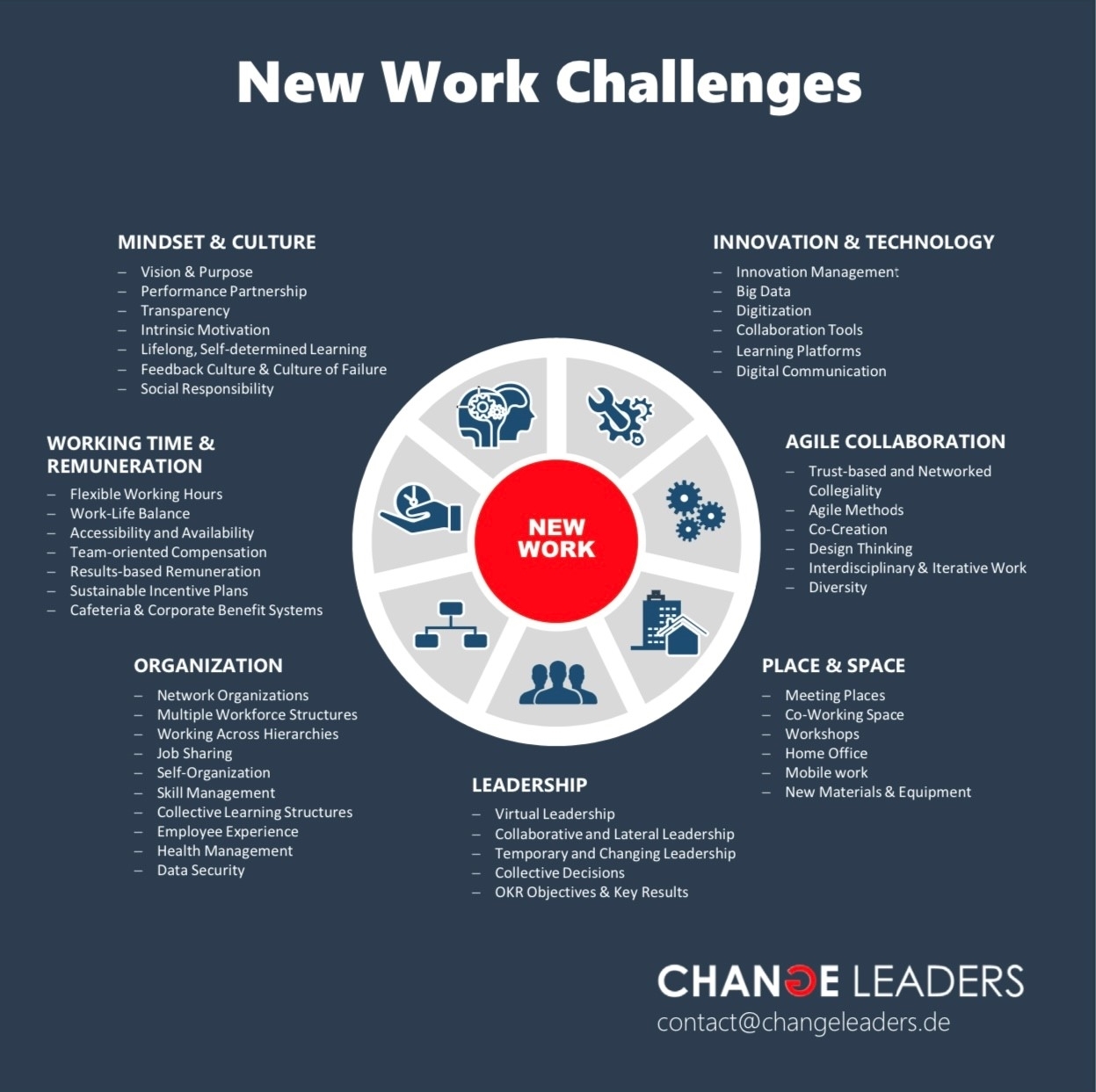The restrictive, sometimes paralyzing effect of the pandemic and the increasing dynamics of digitalization are taking a toll on our companies, employees and their families. Coping with both challenges at the same time requires ambidexterity and rapid adaptability – skills that in many cases we have yet to develop.
This environment of uncertainty and dynamism has taught us that long-term planning hardly works anymore. Instead we support shorter planning and decision cycles through agile methods and the increased use of digital solutions.
Many companies get rid, at least in part, of their traditionally grown organization and, in times of upheaval and uncertainty, are providing fresh energy and a new direction with a strong „purpose.“ Innovative organizations elevate purpose orientation to the highest principle, facilitating distributed authority and agile ways of working.
At the same time, new collaboration models for distributed teams are being designed, workspaces are being redesigned, and employees are being offered new opportunities to independently choose their work location and working hours within defined limits and models. For many employees and their families, the option of working from a home office is very convenient. For others, it is more of a burden and they long to be allowed back into the office. As nice as the freedom gained with the home office may be for the individual, the last few months have also made us aware of how important it is to have a healthy and appropriate mix of presence and remote formats. No collaboration tool, no matter how diverse, and no video connection, no matter how robust, can permanently replace face-to-face conversations in the office and encounters in the hallway, coffee nook or cafeteria.
The changes associated with digital and mobile working require new ideas and concepts with regard to employee recruitment, participation, commitment and retention, as well as for leadership and collaboration, performance management and health protection.
All these challenges will continue to occupy us in the coming years. We will certainly continue to work on many of them in digital formats in the future.


